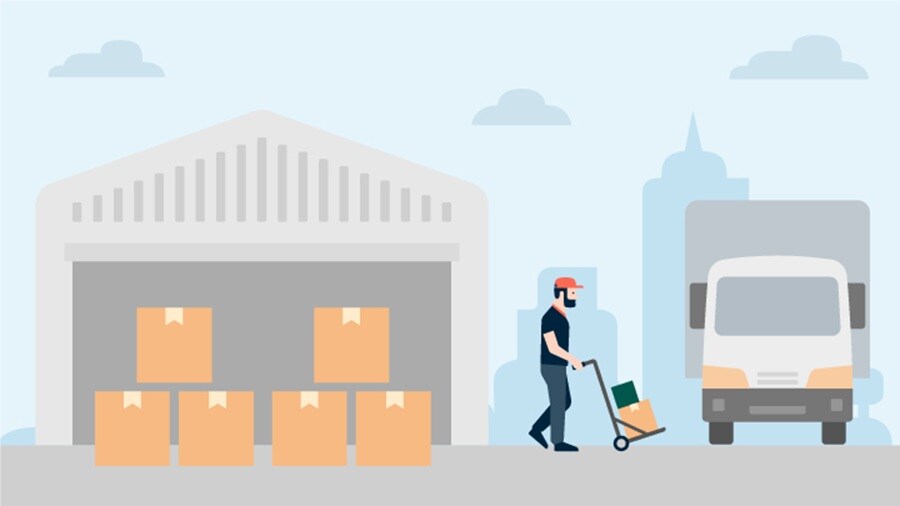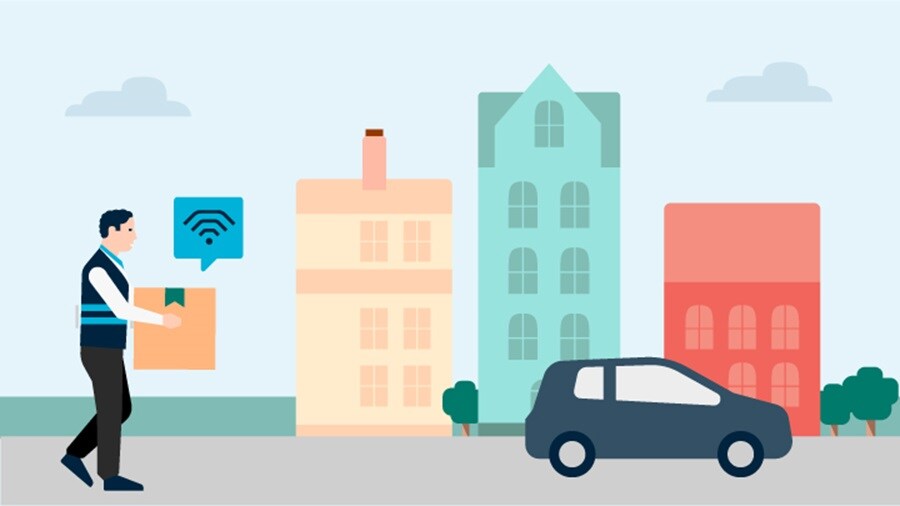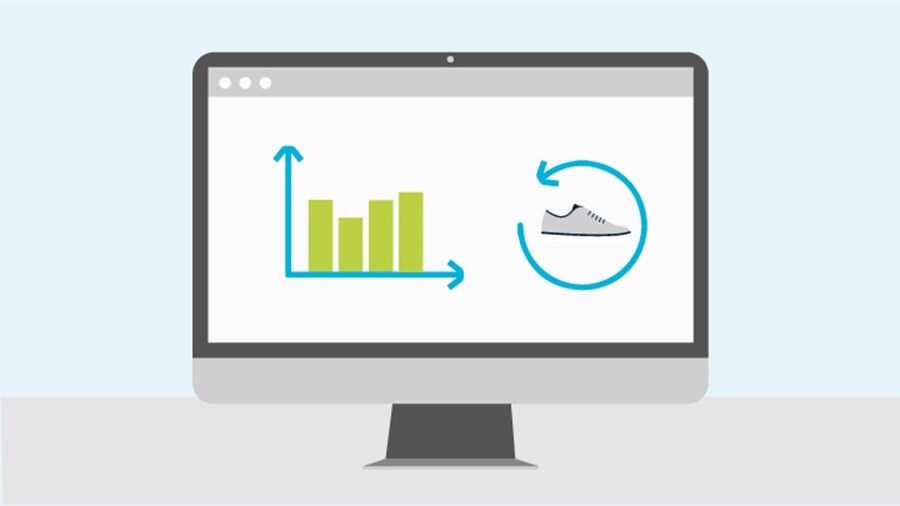European e-tailers spend between 20-40% of their turnover on logistics, according to research. Costs include that of storage, order picking, packing, shipping and returns. On the other hand, should an e-tailer decide to pass these costs onto the consumer, shoppers will quickly move to the competition. And why not? There are over 800,000 online stores in Europe alone.
Supply chains, previously built to service bulk orders delivered to a single (or a few) locations, are finding it difficult to keep up with the current surge in e-commerce demand. What will it take for businesses to overhaul their supply chains in a manner that meets demand and exceeds consumer expectations?

Working backwards from the consumer
Today, Customer Experience goes well beyond ‘fast and free’. Consumers expect choices with respect to when and where they receive their order. They also want to be able to track their delivery in real time. To meet these expectations, brands need to build their direct-to-consumer supply chain on the foundation of delivery flexibility and transparency. Not only will this enhance consumer experience, it’ll minimise the cost of disruptions.

Optimising the cost of superior Customer Experience
Direct-to-consumer has transformed warehousing from a behind-the-scenes storage solution to a consumer-facing inventory management system. Businesses can no longer fulfil orders from a single mother warehouse located far away from where the demand is. The price of responding to frequent orders and the risk of not delivering on time is too high.
As a result, there is a growing need for fulfilment centres located near highly populated areas. This new model reduces delivery times, increases product availability, and enables brands to personalise their packaging.
However, businesses must make sure that they find a delicate balance between rising inventory costs and rising customer expectations.

Breaking the logistics black box
The complexity of a supply chain can be seen as a strength rather than a weakness. But only if the flow of goods is accompanied by a seamless flow of near real-time data. Further, when this end-to-end supply chain data is integrated and analysed along with business data from forecasts, product development, manufacturing, demand, backlogs, and more, e-commerce teams gain greater intelligence. Intelligence that enables them to optimise operational costs, boost consumer engagement, and foster a culture of continuous improvement.

Mastering last-mile deliveries
A Bloomberg study found that 56% of shoppers won’t buy from a brand again if the shipping service is unsatisfactory. For businesses, however, last-mile services are most challenging. Inexperience with route planning, outdated technology, and the lack of visibility make it difficult for companies to implement contingency plans in near real time. Late or incorrect deliveries have a ripple effect on fleet utilisation. And the resulting inefficiencies make last-mile delivery costs account for more than 53% of total shipping costs, according to research. Add to that the price of consumers abandoning their carts due to high shipping fees, and it becomes clear why direct-to-consumer teams need to invest in mastering last-mile deliveries.

Intuitive and easy returns
At least 30% of products ordered online are returned. 41% of shoppers buy products with the intent of returning them. Yet, research suggests that most e-tailers do not have the processes or the resources to handle e-commerce returns. So much so that businesses can lose up to 30% of their profits on lost inventory.
Companies are looking to turn this around. They realise that frictionless returns are an important component of their e-commerce offering. Moreover, they are looking for ways to implement robust reverse logistics through which they can recover the maximum value of products by re-stocking them into the inventory system efficiently.

Building a conscious supply chain
An IBM report found that sustainability is important for almost 8 in 10 consumers. Nearly 60% are willing to change their shopping habits to reduce the environmental impact of their online orders. Over 70% of consumers are willing to pay a premium for sustainable products.
For today’s businesses, being environmentally conscious isn’t just about adhering to international sustainability standards and guidelines. It is a matter of consumer satisfaction and brand reputation. That’s why e-commerce teams are looking for supply chain partners who can support their sustainability goals.
Finding the right logistics partner
Building a direct-to-consumer model from the ground up will take significant time and investments. Partnering with a logistics solutions provider with the necessary infrastructure, expertise, processes and business relationships, on the other hand, is a way for companies to act quickly.
Here’s where Maersk can help, by integrating your supply chain from factory to sofa.
You can minimise ‘out of stock’ experiences by managing inventory flows across the entire European network. So, if you’re running short on stocks in one country, you can ship to consumers from another.
Faster returns are as good for business as they are for the consumer. The faster your products come back into the supply chain, the higher the price you can sell them at. What’s more, you can keep safety stocks ordered from the source low, which in turn brings down the working capital tied up in your supply chain.
Bringing all your last mile delivery partners under one roof will simplify operations a great deal. Connecting with the right delivery partner in every country (or even part of a country) will elevate consumer experiences. During peak season, having access to a pool of alternative delivery partners, will minimise last-mile disruptions.
When you integrate data from your e-commerce logistics with data from other parts of your supply chain with powerful digital solutions, you provide invaluable insights to your teams and enable them to make the smartest possible decisions in near real time.
With Maersk, agility begins even before stocks reach the warehouse. For instance, if demand for a product is increasing rapidly in one European country, we can create a replenishment plan that transloads goods in transshipment hubs and ships them directly to the country.
At Maersk, we believe in working systematically to reduce the negative and enhance the positive impact business can have on people, society, and the environment. Whether you need to minimise over-production, scrappage, or your carbon emissions, we’re here to support and contribute to your sustainability goals.

无论您需要什么,我们都可以随时为您提供帮助
I agree to receive logistics related news and marketing updates by email, phone, messaging services (e.g. WhatsApp) and other digital platforms, including but not limited to social media (e.g., LinkedIn) from A. P. Moller-Maersk and its affiliated companies (see latest company overview). I understand that I can opt out of such Maersk communications at any time by clicking the unsubscribe link. To see how we use your personal data, please read our Privacy Notification.
By completing this form, you confirm that you agree to the use of your personal data by Maersk as described in our Privacy Notification.
